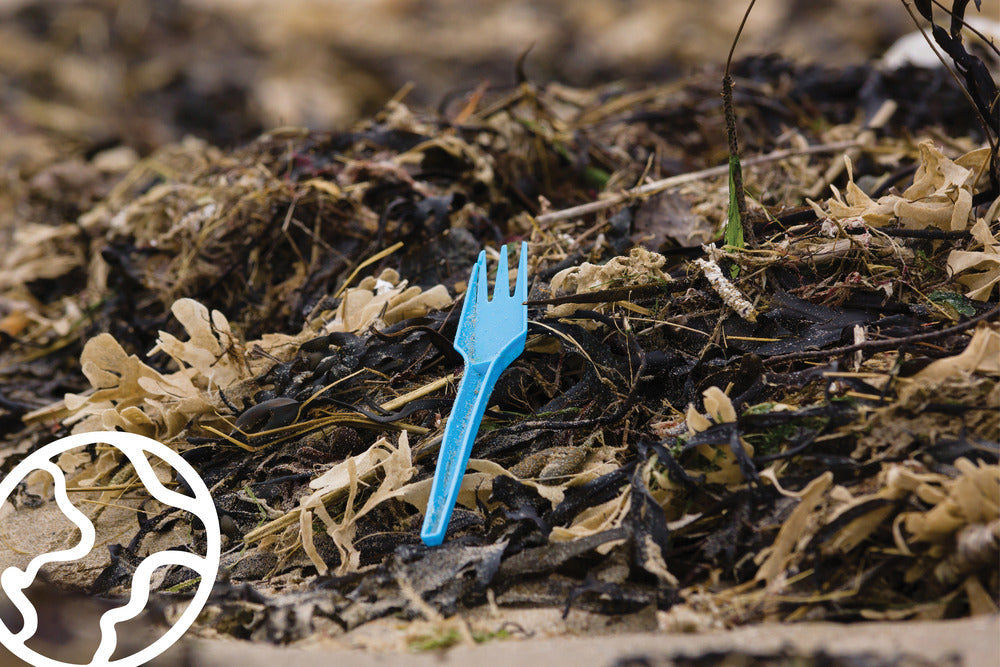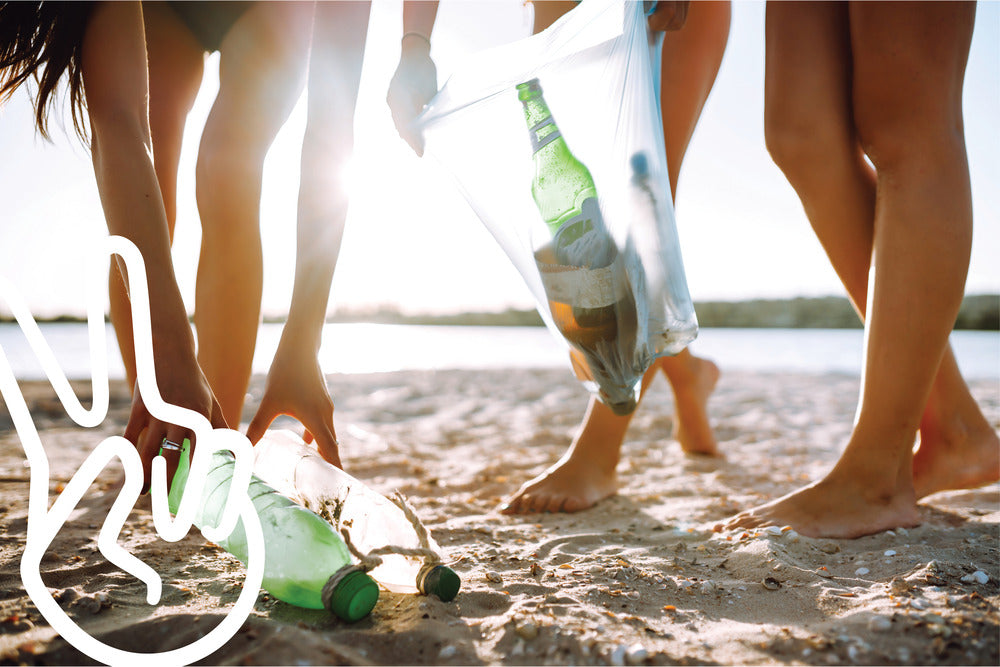Plastic is everywhere. It’s wrapped around our groceries, woven into our clothes, and lining the shelves of almost every store. It’s cheap, convenient, and designed to last forever—literally. And that’s the problem. Most of the plastic we use is made for single-use moments but sticks around for hundreds of years, slowly breaking down into microplastics that infiltrate every corner of our planet.
So why, exactly, is plastic so bad for the environment? Let’s break it down and get real about the long-term impact of our plastic obsession.
Plastic Doesn't Go Away—It Just Gets Smaller
One of the biggest issues with plastic is that it doesn’t biodegrade like organic materials. Instead, it breaks down into smaller and smaller pieces called microplastics, which never fully disappear. These microplastics end up in our soil, oceans, drinking water—even the air we breathe. Researchers have found microplastics in Arctic snow, deep ocean trenches, and, disturbingly, inside human bodies.
Unlike materials like paper or food scraps, plastic doesn’t compost. That sandwich wrapper from lunch? Still sitting in a landfill or blowing across a beach somewhere, maybe even decades later. If it ends up in the ocean, it can break down into particles so tiny that even plankton mistake them for food—and the entire marine food chain suffers.
Plastic Production Is a Climate Issue, Too
Plastic is made from fossil fuels—mostly petroleum and natural gas. That means every plastic fork, straw, or takeout lid starts its life with oil drilling, refining, and energy-intensive manufacturing processes that release greenhouse gases. The Center for International Environmental Law estimates that by 2030, plastic production and incineration could release over 1.3 gigatons of CO₂ per year. That’s roughly equivalent to the emissions of 300 million cars.
Even after it’s used, plastic doesn’t stop contributing to climate change. When it’s incinerated (a common method of disposal), it releases toxic pollutants and CO₂ into the atmosphere. And when it’s dumped in landfills, it leaks methane, another potent greenhouse gas. So the life cycle of plastic—from extraction to disposal—is a climate nightmare.

Wildlife Pays the Price
Ever seen a heartbreaking image of a sea turtle tangled in a plastic bag or a seabird with a stomach full of bottle caps? Wildlife is on the front lines of plastic pollution. Marine animals often mistake plastic for food—bags look like jellyfish, microbeads resemble fish eggs. Ingesting plastic can cause choking, starvation, or internal injuries that lead to death.
And it’s not just sea creatures. Birds, fish, and even grazing animals like cows and deer can fall victim to discarded plastic. Plastic six-pack rings, balloon strings, and food wrappers are common culprits. One study found that 90% of seabirds have plastic in their guts. The toll on biodiversity is staggering—and largely preventable.
It Pollutes at Every Stage
We often think of pollution as something that happens after we throw something away, but plastic pollutes throughout its entire life. Extraction of raw materials for plastic production leads to habitat destruction and oil spills. Manufacturing releases harmful chemicals into the air and water. Transportation uses fossil fuels. And then there’s the end-of-life chaos: landfills overflowing, littered beaches, rivers choked with waste.
Even “recyclable” plastics come with a heavy footprint. Less than 9% of plastic ever produced has actually been recycled. Most ends up in the landfill, incinerator, or the natural environment. So while recycling is part of the solution, it’s not the cure-all it’s often made out to be.
Plastic Infiltrates Our Food and Water
Here’s a not-so-fun fact: You’re probably eating plastic. A 2019 study by the World Wildlife Fund estimated that humans could be ingesting a credit card’s worth of plastic every week through food, water, and even the air. Yikes.
Microplastics have been found in seafood, salt, honey, beer, and bottled water. They can absorb harmful toxins from the environment and carry them into your body, potentially disrupting hormones or triggering inflammation. The long-term health effects aren’t fully understood, but the early signs aren’t great.

It Disproportionately Affects Low-Income Communities
Plastic pollution isn’t just an environmental issue—it’s a social justice issue, too. The burden of plastic production and waste disposal often falls on low-income communities, especially communities of color. Many plastic manufacturing plants and waste incinerators are located in these areas, leading to higher rates of asthma, cancer, and other health problems.
Meanwhile, wealthy countries often ship their plastic waste to less developed nations, where it piles up in open-air dumps or washes into waterways. This environmental dumping adds insult to injury, putting already vulnerable communities at even greater risk.
But It’s So Convenient… Right?
We get it—plastic can be hard to avoid. It’s woven into so many aspects of daily life, from the packaging on your groceries to the fibers in your clothes. But that’s exactly why it’s worth examining. The convenience of plastic comes at a very real cost, and the more we understand that, the more empowered we are to choose alternatives.
The good news? Sustainable swaps are easier and more accessible than ever. It starts with awareness—and then action.
What Can You Do About It?
You don’t need to go zero-waste overnight to make a difference. Start small. Get curious. And begin replacing your most common single-use plastic items with long-lasting, reusable alternatives.
Here’s a solid starting point for reducing your plastic footprint:
-
Swap paper towels for UNpaper Towels® to keep waste out of landfills and your kitchen looking cute.
-
Use cloth wipes instead of tissues or disposable baby wipes—they’re washable, soft, and way more planet-friendly.
-
Say no to plastic wrap by switching to beeswax wraps or reusable bowl covers.
-
Refill instead of rebuy. Try shopping at bulk stores or local refill shops with your own containers.
-
Opt for wood, glass, or metal when choosing household goods like brushes, straws, or utensils.
-
Bring your own when you’re on the go—cutlery, cup, and tote bags go a long way in preventing impromptu plastic use.
The Bottom Line
Plastic is bad for the environment because it’s designed to last forever in a world where we treat it like it’s disposable. It pollutes our air, water, and food. It harms wildlife. It worsens climate change. And it disproportionately impacts marginalized communities. But we’re not powerless in the face of plastic. With every reusable swap and conscious choice, we push back against a throwaway culture—and toward a future that’s cleaner, greener, and a whole lot more joyful.
Ready to make the switch? Explore our plastic-free bundles and start making sustainable changes that stick.



